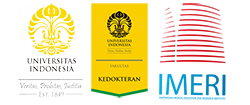E-Learning Readiness and Job Stressor of Elementary School Teachers in the Covid-19 Pandemic
DOI:
https://doi.org/10.69951/proceedingsbookoficeonimeri.v6i-.126Keywords:
E-learning readiness, , job stressor, teacher, elementary schoolAbstract
Background: E-learning readiness became a new workload for teachers during the Covid-19 pandemic because of the obligatory online teaching. E-learning readiness comprises four factors: the readiness of technology, innovation, people, and self-development; and it might cause job stressors and affect teachers' performance. The research objective was to explore job stressors that influence teachers the most and how they might be associated with E-learning readiness.
Method: The cross-sectional method assessed 186 teachers from public and private elementary schools in the urban city area in Jakarta. The data obtained from questionnaires: Teacher Stress Inventory (TSI) Boyle and E-learning Readiness (ELR) Aydin and Tasci. TSI assessed teachers' job stressors in five main components: workload, student behavior, professional recognition, time and resources, and interpersonal relationships.
Results: Most teachers perceived readiness at e-learning (84.9%). E-learning readiness was a profound problem for female and non-classroom teachers. The dominant job stressors for teachers were workload (27%), professional recognition (22%), time and resources (21%), and student behavior (21%). The number of students influenced workload and professional recognition. Self-development was the prominent e-learning readiness factor associated with teacher job stressors, especially professional recognition.
Conclusions: In urban areas like Jakarta, fifteen percent of teachers remain unprepared for e-learning teaching. The unpreparedness was related to the female gender and non-classroom teachers, who need e-learning skills training to improve their readiness and control job stressors for better teaching performance in a prolonged pandemic situation.




